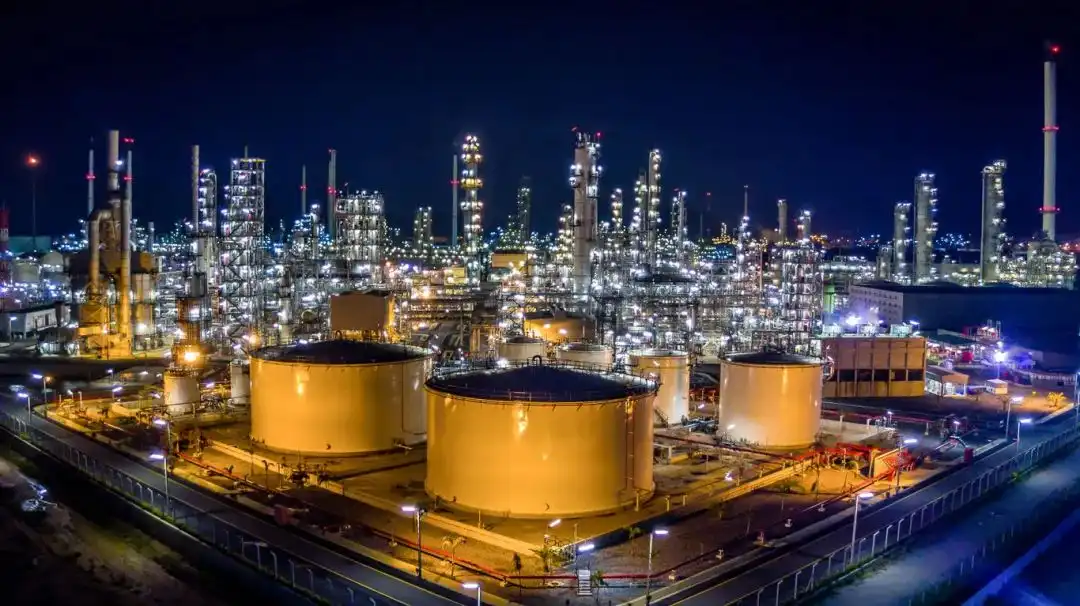Europe's refining capacity is in jeopardy, and global refining capacity is accelerating to eliminate the old and replace the new.
The industry generally believes that the refining and chemical industry in Europe and the United States is no longer as glorious as it used to be, a large number of refineries are facing closure, and global refining and chemical production capacity is accelerating to "eliminate the old and replace the new."

Energy consulting firm Wood Mackenzie recently conducted a comprehensive assessment of 465 refineries around the world and found that 121 are at varying degrees of closure risks, equivalent to 19.95 million barrels per day of refining capacity facing elimination, which accounts for approximately 21.3% of the total refining capacity in 2023, of which as many as 3.6 million barrels per day of refining capacity are classified as "high risk", and most of these production capacity is located in Europe.
业界普遍认为,欧美炼化业已经不现往日辉煌,Large number of refineries face closure,全球炼化产能正加速“除旧布新”。
European and American industries urgently need transformation and upgrading
According to Wood Mackenzie's assessment, European refinery closures are at the highest risk, with 11 refineries in the region classified as "high-risk closures", accounting for 45% of high-risk closures.
"As gasoline margins decline and decarbonization pressure increases, the European refining industry is facing extreme pressure in the medium term, and closure may be the only option." said Emma Fox, senior petroleum and chemicals analyst at Wood Mackenzie.
美国炼化行业同样面临技术落后、设备老旧等问题。事实上,随着能源转型持续推进,下游炼化行业正开启新一轮优胜劣汰生存战。伍德麦肯兹表示, Refineries at risk of closure are generally small in scale and have relatively single products, making it difficult to compete with large integrated refining and chemical manufacturers.
According to data from the International Energy Agency, between 2020 and 2026, approximately 3.6 million barrels per day of refining and chemical production capacity has been announced to be shut down around the world. As the pace of energy transformation accelerates, it is imperative for traditional refineries to seek modernization transformation and transformation.
It is generally believed in the industry that eliminating backward refining and refining production capacity and accelerating industrial transformation and upgrading are the main tasks of the refining and refining industry in the future.
Refining and chemical modernization layout looks east
Wood Mackenzie pointed out that most refineries in China are planning to promote low-carbon investment and technological transformation and upgrading. An expert familiar with the development of China's oil and gas industry told a reporter from China Energy News:"Integrating and eliminating backward production capacity, accelerating the promotion of large-scale refining and chemical integration projects, and optimizing the refining structure to transform to 'simultaneous development of oil and chemical and high-quality new materials'have become the new normal in the development of China's refining industry."
伍德麦肯兹表示,In addition to China, 23 refineries in the Asia-Pacific region are at low to medium risk of closures.
"70% of independent refiners in the Asia-Pacific region have petrochemical integration projects, but due to the high cost of decarbonization, it may not be possible to maintain too many refinery operations." Emma Fox said,"Over time, pressure to reduce emissions will increase, and refiners will inevitably need to make arrangements."
Industry insiders believe that in the future, decarbonization costs will account for a large part of refinery operating costs, so investing in decarbonization facilities will significantly improve competitiveness. For refiners, maintaining product portfolios diversified and low-carbon will be one of the key factors in ensuring the "survival" of more refineries.
"Independent refineries with high emissions often face asset divestitures or closures first." Emma Fox said.
It is noteworthy that the Gulf region is also accelerating the layout of modern refining projects. The Middle East magazine "Petroleum Economist" pointed out that Gulf oil-producing countries have accelerated the modernization and transformation of the refining and chemical industry. As of the end of last year, there were more than US$100 billion in petrochemical projects in the Middle East, most of which were led by Saudi Arabia and Iran. Middle Eastern countries 'measures to expand downstream investment and increase petrochemical production capacity benefit from raw material advantages on the one hand and geographical location advantages on the other.
Europe's traditional production capacity is in jeopardy
欧洲石油化工协会数据显示,2009年以来,About 30 refineries in Europe have closed 。与此同时,非洲最大炼油厂尼日利亚丹格特炼油厂正式运营,而此前数十年来,非洲每年从欧洲进口价值170亿美元的汽油,这在一定程度上给欧洲炼化市场带来压力。
The Dangote refinery was put into operation at the end of last year and officially started production in January this year. It has a designed production capacity of 650,000 barrels per day. While fully meeting Nigeria's demand for refined petroleum products, it can also have a surplus for export. Oil Price Network pointed out that the Dangote refinery can produce almost all refined oil products on the market and is expected to be fully put into operation in the second half of this year. By then, it will not only export gasoline and diesel to Europe, but is even expected to sell gasoline to local markets in Latin America and Africa.
Reuters pointed out that for European refiners, it is imperative to promote the transformation and upgrading of traditional refineries. Italy's Eni Group recently announced that it will close its local Livorno refinery for modernization and upgrading, while Shell plans to transform Germany's Wesseling refinery into a basic oil production facility. It is understood that the Livorno refinery is the ninth traditional refinery in Europe to close since 2020, and since then, European refining capacity has lost more than 1 million barrels per day.
Eni plans to convert the Livorno refinery into a biofuel plant, which will be the company's third biorefinery in Italy, which currently produces gasoline, diesel, jet fuel, sustainable jet fuel and lubricants. The renovated Livorno refinery will mainly produce hydrogenated biofuels. The renovation work includes the construction of three new facilities, namely a pretreatment device for the production of biological raw materials, a 500,000-ton/year ecological refining facility, and a hydrogen production facility from methane gas. It is initially expected to be completed and put into trial operation by 2026.
original title:Global refining and chemical production capacity "eliminates the old and provides new ones"
